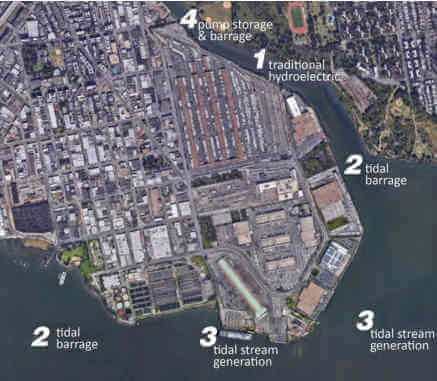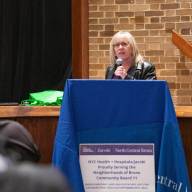Hunts Point is poised to embrace an efficient energy system that could save over $6 million per year…courtesy of Mother Nature.
Installing a geothermal system in Hunts Point would leverage the energy absorbing capacity of the earth, bringing significant economic impact to the area while slashing greenhouse gas rates in the process, according to a recently published report by the NYC Economic Development Corporation and the research non-profit Urban Land Institute New York.
“New York City hinges on the viability and reliability of the Hunts Point Food Distribution Center, a network of distribution businesses located on the Hunts Point Peninsula in the Bronx that handles 4.5 billion pounds of food flow each year,” the Hurricane Sandy- inspired study stated as the reason for the proposed project’s significance.
ULI began surveying the mostly industrial area in March, finding that the geothermal system might “also assist in aligning residents and businesses around the shared benefits of improved energy infrastructure and green infrastructure in Hunts Point.”
Hunts Point Landing is the key in taking this concept from an idea to a more practical phase. To do so, the agencies would need to: locate a pumping station at the peninsula’s edge, expand Hunts Point Landing Park, while subsequently creating a signature building to house the pumping station, utilizing the existing 24-foot underwater box culvert at Hunts Point Landing for a point of entry, then analyze the depths of the East River channel for the project’s pipeline, and last but not least, lay the foundation of the geothermal delivery system down Hunts Point Avenue to serve as the ‘tree’ from which energy can branch to serve the meat market, fish market, produce market, residential core and even beyond that, the study indicates.
Once those few minor details are completed, the system would use the heat the earth releases to warm indoor air during the cold winter months and remove heat during the hot summer months, particularly in the market.
Out of the three markets in the distribution center, the meat market siphons off a majority of the entire complex’s energy, the study indicates.
“Many discussions centered around how to make Hunts Point a healthier environment, particularly given that the neighborhood has one of the highest asthma rates in the region,” according to the study.
Common goals for that include: improving air quality; reducing emissions, particularly from the diesel trucks idling in the produce market year round for days at a time, providing and protecting access to the water, specifically to the Bronx and East rivers; promoting a healthy environment. public processes; and making visible the benefits to the community.
Currently, the distribution center exerts roughly 11.3 megawatts of power and is projected to grow up to 24 megawatts in future years.
If the geothermal system is installed, “NYC EDC and the food distribution center would no longer need to tap the market to purchase more energy, likely resulting in a significant avoidance of future energy purchases.”
A similar-sized installation in Alaska footed an $80 million bill and took five years to complete construction, the study showed.
























